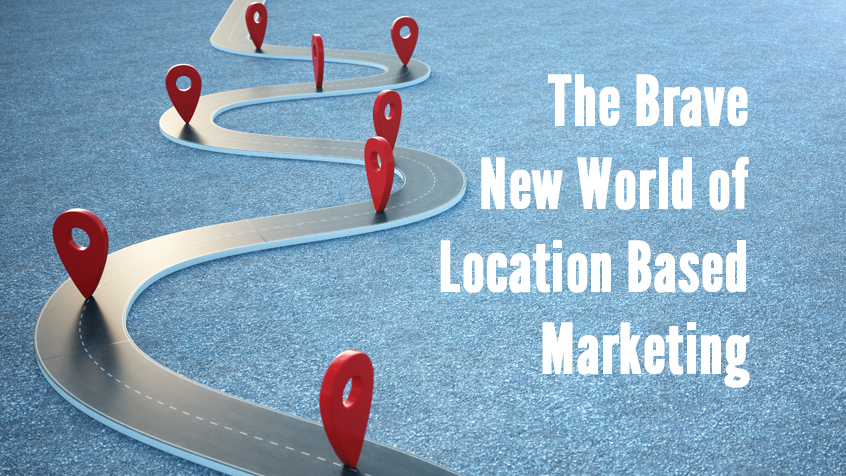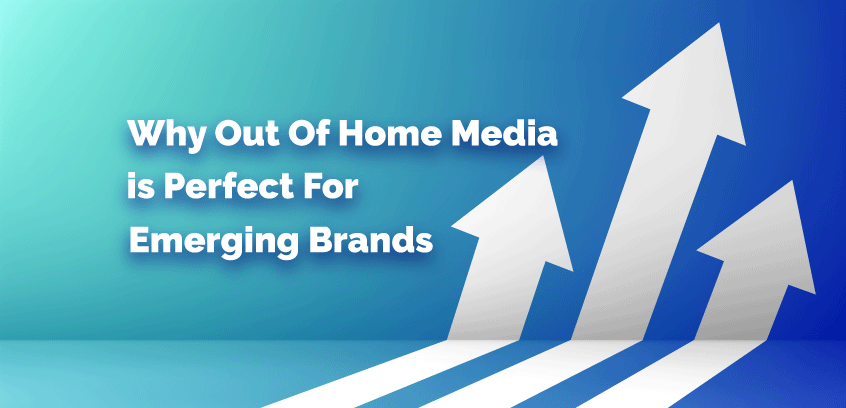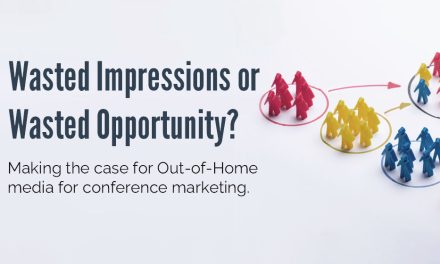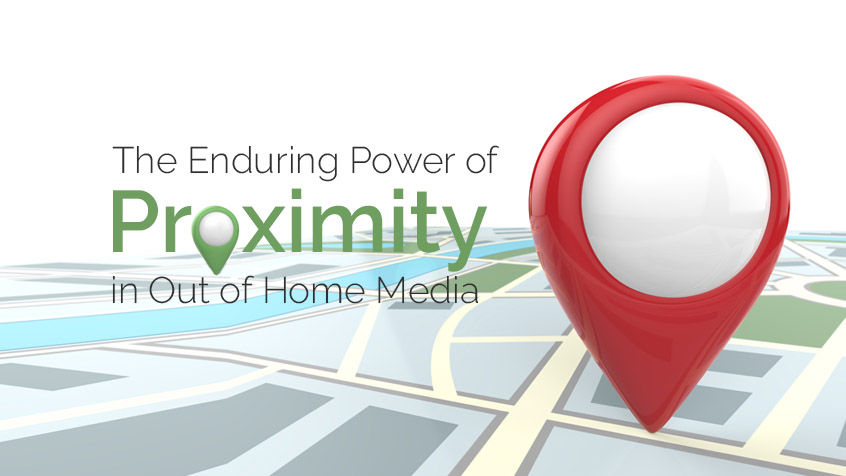In a world full of digitized interactions, marketers need to find a way to engage consumer bases that is more plugged in than ever before. Keeping up with the competition in this cluttered ecosystem has never been more difficult or more crucial for marketers. This means embracing emerging technology and understanding how to harness its dual nature of disruption and innovation.
Global research firm Gartner recently announced its picks for the top 10 strategic technologies for 2019. The study reported on the current state of technology use, identifying key trends that will impact many industries moving forward.
Industries like advertising and marketing have become increasingly more tech-savvy. Gartner’s list offers an avenue for improved ROI and greater efficiency and accuracy. So how does location based marketing benefit from the shift, and what are some key trends related to the field?
Experiential Marketing
Experiential marketing campaigns invite an audience to engage with a brand in a real-world setting. Often centered around specific events or trade shows, they’re a great way to focus on building relationships with consumers. Some examples include:
- HBO’s escape rooms – HBO created a series of escape rooms of their own at last year’s SXSW music festival. Centered around their hit shows Veep, Silicon Valley and Game of Thrones, the rooms forced attendees to be fully engaged and provided a once-in-a-lifetime experience for fans of each show.
- Refinery 29’s “29 Rooms” – Billed as a “funhouse of style, culture, and creativity,” 29 Rooms provides an interactive way for the digital entertainment company to showcase their brand and their on-trend connection to all things art and fashion, including appearances from major Hollywood A-listers and brand features from companies like Aldo, Ulta and Dunkin Donuts. The exhibit demonstrates how publishers can work with brands to create an impactful experience for consumers.

HBO’s “Escape Room” at SXSW.
Immersive Experiences
It’s no longer enough for brands to simply tell their story to a captive audience. Today, they need to actively involve their customer base through immersive technology such as augmented reality (AR) and virtual reality (VR). This plays very well into experiential campaigns in the right context. Brands are able to create programs that add an additional layer of interactivity to their campaigns, popups or events. Some examples include:
- Ikea’s AR furniture mockup app Ikea Place – Leveraged at a launch event for consumers to have virtual pillow fights and play with simulated pandas projected onto real-world products within the store.
- Acura’s live-streamed “race” – Four social media influencers were shown racing through a variety of fantastical landscapes like a snowstorm and a tropical jungle, before a live audience. In reality, they were simply driving down a sunny California street. Acura urged viewers to influence the outcome of the race by liking or commenting on the live stream. This lead to nearly 3,000 acts of engagement and over 200 thousand total impressions.
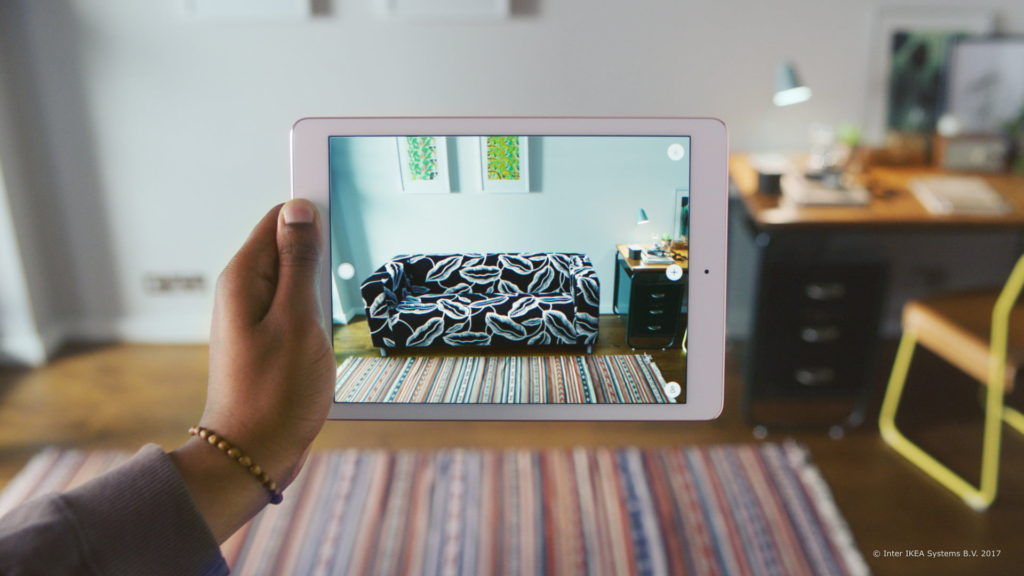
Ikea’s “Ikea Place” mobile app.
Smart Spaces
Smart spaces–digital or physical environments where individuals and technology-powered systems interact in open, interconnected networks(Gartner)–have quickly risen into the mainstream. The advent of virtual personal assistants, smart outlets and home security systems have led to the widespread adoption of smart homes and voice-activated queries. In fact, the number of Internet of Things (IoT) endpoints is expected to jump from 2 billion devices in 2006 to 200 billion in 2020.
This dominance means that brands are taking note of the IoT’s potential to transform experiential marketing. Brands can send information about a product, sale or event directly to a consumer’s device and tailor their experience accordingly. This hyper-relevant type of marketing can more efficiently facilitate brand impressions. This is especially useful at trade shows and other events where the share of voice is limited.
Digital Media
Digital media in advertising spans areas like in-app advertising, website banner ads, search engine optimization and content marketing. A reflection of legacy advertising, digital media sets the tone for how consumers perceive your brand. Then, there is a more direct tie to purchasing behaviors. Examples include:
- Wendy’s social media domination – Fast food staple Wendy’s has gained notoriety among marketers for their unique, no-holds-barred approach to social media. Their team realized that younger consumers appreciate sharp humor. They parlayed that into an edgy Twitter feed, a Spotify “mixtape” and interactions with rival brands and fans. In 2018, their shares rose by 4.3 percent, while lead competitor McDonald’s fell nearly nine percent.
- Sun Basket’s mobile ad campaign – This healthy food subscription service needed to compete with established companies like HelloFresh and Blue Apron. Sun Basket’s decision to hire an advertising firm to help them gain traction among social users paid off. Their compelling and concise ads resulted in a 42 percent reduction in customer acquisition costs and a subscriber increase of nearly 500 percent.
Augmented Analytics
One of the baseline elements of any digital marketing campaign is being able to measure historical data and campaign performance. This helps to establish key performance indicators (KPIs) and execute against them. Augmented analytics involves using machine learning algorithms (ML) to analyze raw, unstructured data at a rate unsurpassed by humans. Tying this data to current trends, past transactional patterns and business KPIs helps marketers make actionable inferences.
This “speed to insights” approach means that brands have the agility to pivot where needed. That they can better adapt to the fluctuating nature of social media marketing and SEO. This is especially helpful for business leadership. Decision-makers often can’t afford to wait to hear from data scientists or outside experts on how their digital content will perform before making a strategic move. Jonathan Cherki, CEO of user experience platform ContentSquare, argues that “relying on a handful of experts is neither efficient nor scalable. Enterprises, many of which are overwhelmed with data, need to make their website optimization decisions based on insightful experience data that drives conversions instead of on their gut feeling.”
Blockchain
Blockchain has the theoretical potential to disrupt the way that marketers approach media buying and record-keeping. It’s an encrypted digital ledger that records data both chronologically and publicly over a shared network. It first emerged on the scene as the backbone of cryptocurrency brands like Bitcoin and Ethereum. In the time since, technologists have been advocating for the use of decentralized databases across a variety of industries.
In the context of marketing, blockchain has been forecast to strengthen consumer control and generate stronger leads for brands. Currently, digital advertising is facilitated via a middleman such as Facebook or Google. With blockchain, marketers and users could buy and sell directly without a third party involved. Some advertisers might even be able to pay consumers for watching their ads. Digital advertising technology company Brave has developed a Basic Attention Token (BAT), which simply calculates the amount of “mental effort” spent watching a brand’s ad and issuing a corresponding payment in Ethereum.
Companies like Snovian.Space are also using blockchain to allow professional consumers to network and sell their own personal information securely over a blockchain network to businesses. This lead-generation service promises consumers greater control over their data and offers brands more qualified leads.
Out of Home
OOH media helps capture the attention of consumers on the go. They rely on being visually compelling and informative in order to be effective, and some brands would argue they are more effective than ever. Examples of technology in OOH include:
- Spotify leveraging user data – Last year, streaming giant Spotify continued their popular ad campaign from 2016 with fun data visualizations from real users. Last year’s campaign, titled “2018 Goals,” offered up funny trending data points to evoke an emotional response from consumers.
- Delta’s “SweatLag” – In partnership with Equinox Fitness, Delta targets consumers leaving the Los Angeles Airport with a digital billboard displaying messages aimed at arriving flights from a few specific cities. The personalized data informs the graphic that is displayed on the screen, thereby remaining relevant to the consumer.

Delta’s “Sweat Lag” digital billboard campaign.
AI-Driven Development
Oracle CEO Mark Hurd predicted in a recent OpenWorld keynote that by the year 2025, “AI will be a core feature that will be embedded into every solution and application.” The ability of computer algorithms to solve problems and create efficiencies holds special value for marketers. This will simplify reporting against complex analytics and develop ads that target consumers in real-time.
Digital Twins
Digital twin technology is a digital representation or reflection of a real-life object or system. They have been used for years to facilitate executive-level decision making by enabling “what-if” scenarios. Lessons learned in a virtual simulation, augmented by real-time data and historical analysis, translate to positive action in the real world.
This can be extremely valuable for marketers looking to market-test OOH ads before unveiling them in real life. Virtual prototyping is more commonly used in go-to-market scenarios in a manufacturing or engineering context. But other brands can make use of Augmented Reality to showcase what their current products would look like on a customer or in their living room.
Conclusion
Marketers and planners continue to strive for better campaigns, stronger ROI and more meaningful audience experiences. There is a lot of ground left for technologists to cover in order to make the more theoretical applications a reality. That said, as we hit our full stride in 2019, we’re already seeing agencies and brands take advantage of these and other emerging technologies.
Find out more about the future of location-based marketing by checking out 5 Important Trends for Out of Home in 2019, or contact us using the form below!


